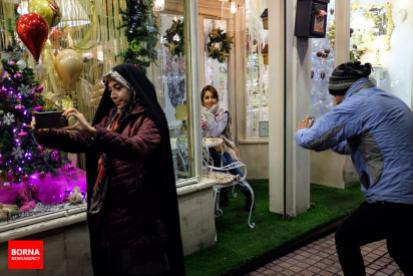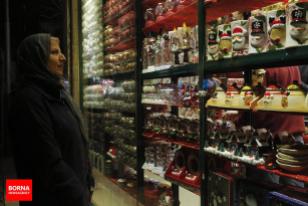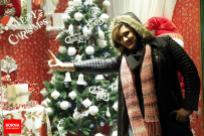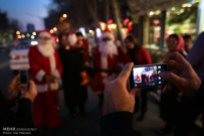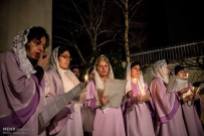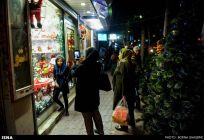The bell of Surp Karapet Church in Abadan, Khuzestan Province, rang before noon of Christmas Day on December 25, for the only Christian family of the city. Muslim citizens of Abadan joined the feast to wish this family a happy Christmas and to celebrate the birth of Jesus Christ with them.
Surp Karapet, the church of Abadan’s Gregorian Armenians, lies adjacent to Imam Musa Ibn Ja’far Mosque. It was constructed in the 1950s, repaired in 1996 and reopened in 1999, since 40% of the building was damaged during the eight-year war. It is registered as an Iranian national monument and used to serve as the largest hall of meetings for Abadan’s Armenians.
Iran is one of the safest places in the Middle East for Christians with many Iranians loving the flashy side of Christmas. Shoppers gathered over the past month in the Armenian districts of Somayeh and New Julfa — the biggest Christian areas in Tehran and Isfahan — to pick up fake trees and stock up on baubles, reindeer toys and plastic snowmen.
The majority of Iranian Christians are ethnic Armenians and Assyrians, who follow the Armenian Apostolic Church and the Assyrian Church of the East respectively. Armenians celebrate the Nativity and baptism of Jesus on January 6, at the same time as the Epiphany. The Assyrians today celebrate Christmas on December 25.
Early traditions observed the birth of Jesus Christ on January 6 but by the end of the 3rd century, Christmas in Rome was moved to December 25, to override a pagan feast dedicated to the birth of the sun. Since 1923, the Armenian Apostolic Church has mainly used the Gregorian Calendar. The only exception is the Armenian Patriarchate of Jerusalem, where the old Julian calendar is used, putting Nativity celebrations on 19 January in the Gregorian calendar.
Photos: Christmas shopping in Tehran and Isfahan, Surp Karapet Church in Abadan (Khuzestan) and liturgies at Surp Mesrob Church in Arak (Markazi), Vank Cathedral in Isfahan, and St. Grigor Lusavoritch Church, St. Joseph Church, St. Sarkis Cathedral, St. Targmantchats Church and Surp Vardanantz Church in Tehran
Sources: France 24, armenianchurch-ed.net, Wikipedia | Christianity in the Middle East (Iran), Wikipedia | Christmas traditions (Assyrians), Wikipedia | Armenian Apostolic Church, Mehr News Agency (in Persian), Tehran (BORNA 1, BORNA 2, ISNA, IRNA, ANA), Isfahan (IRNA), Surp Karapet Church, Abadan (Iran Front Page, Twitter @afptehran, instagram @sara_kaabii, instagram @majid.rahimi1), Surp Mesrob, Arak (ISNA), Vank Cathedral, Isfahan (IRNA, Tasnim News Agency), St. Grigor Lusavoritch, Tehran (BORNA), St. Joseph’s, Tehran (Twitter @ali_noorani_teh, Mail Online), St. Sarkis Cathedral, Tehran (Mehr News Agency, IRNA 1, ANA, IRNA 2), St. Targmantchats, Tehran (ANA), Surp Vardanantz, Tehran (BORNA)
















